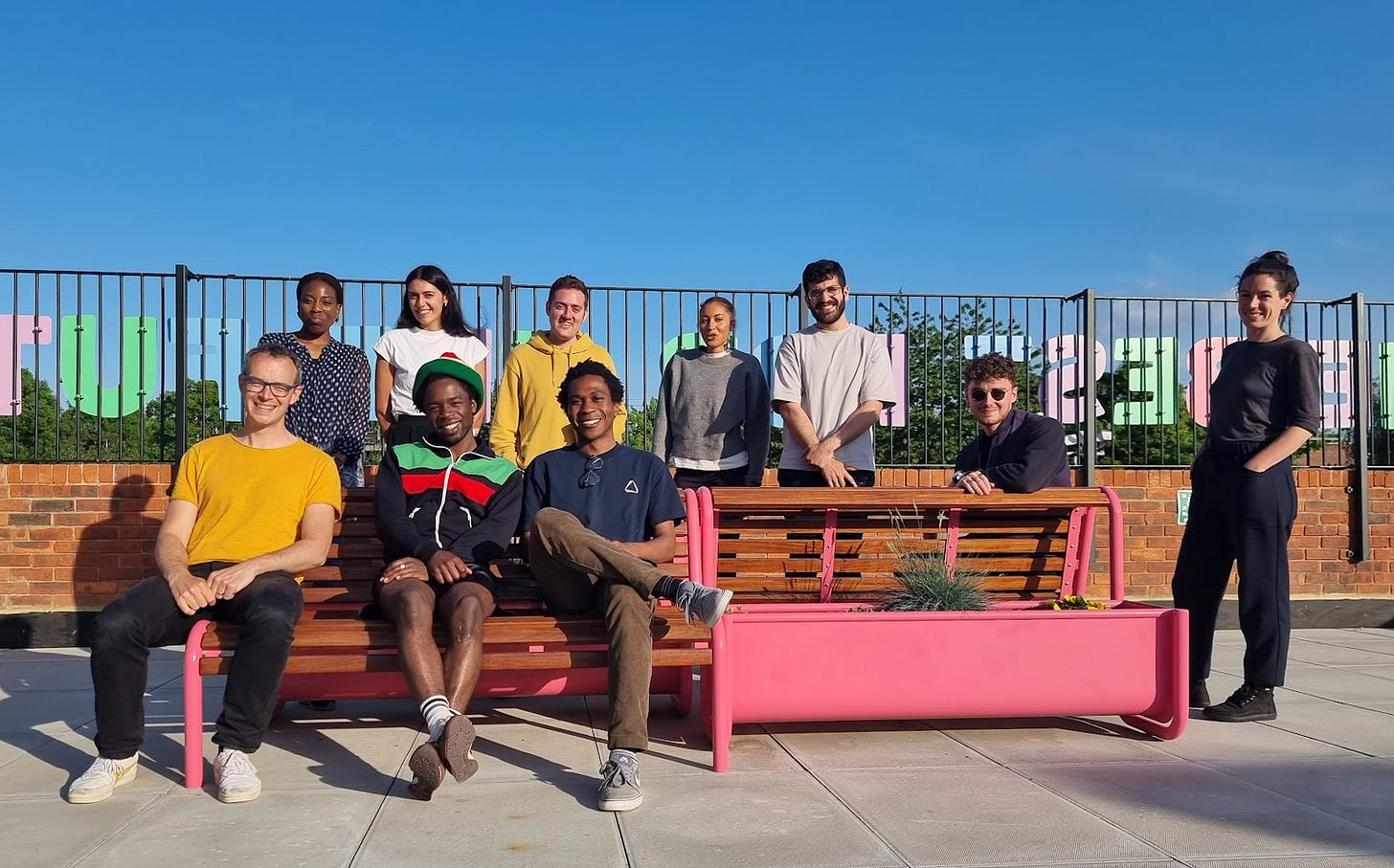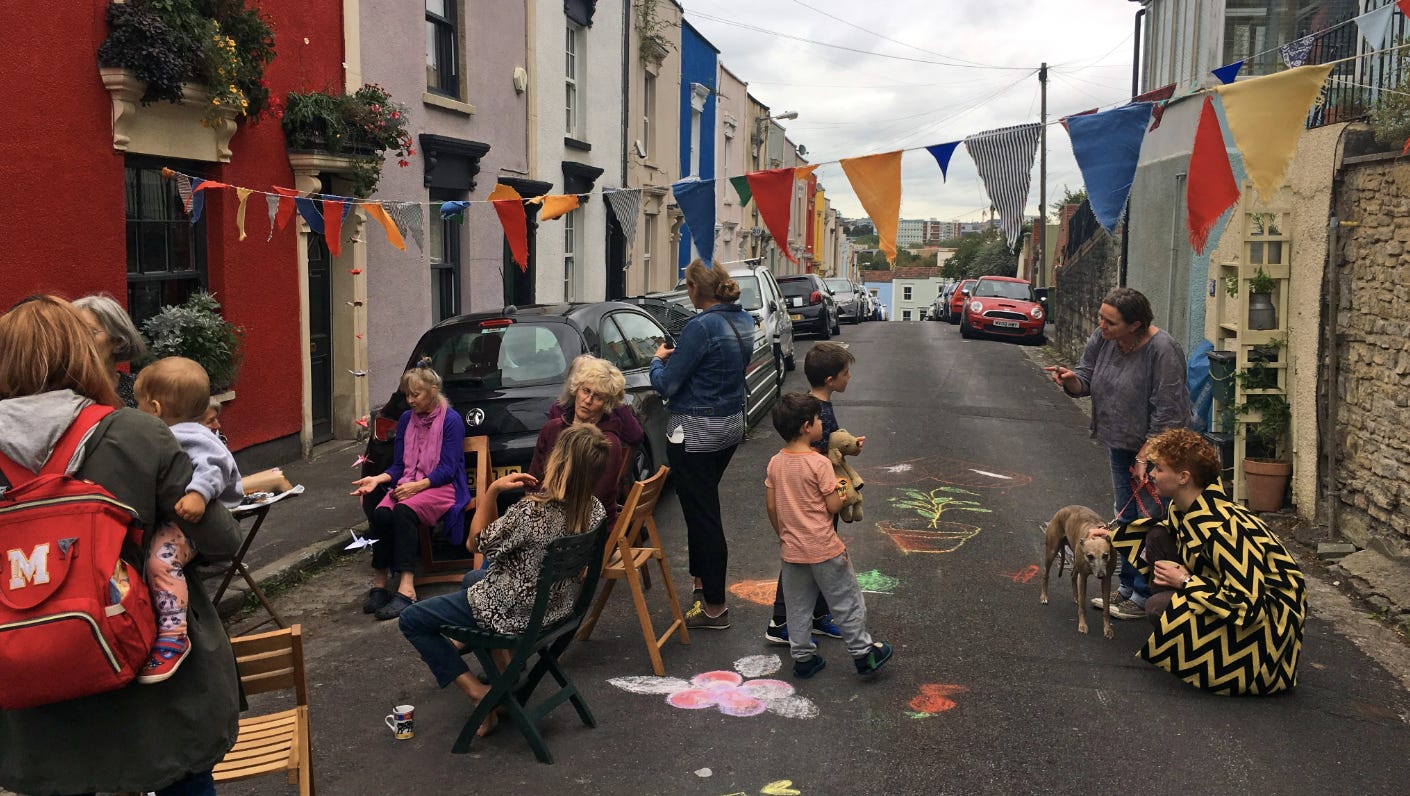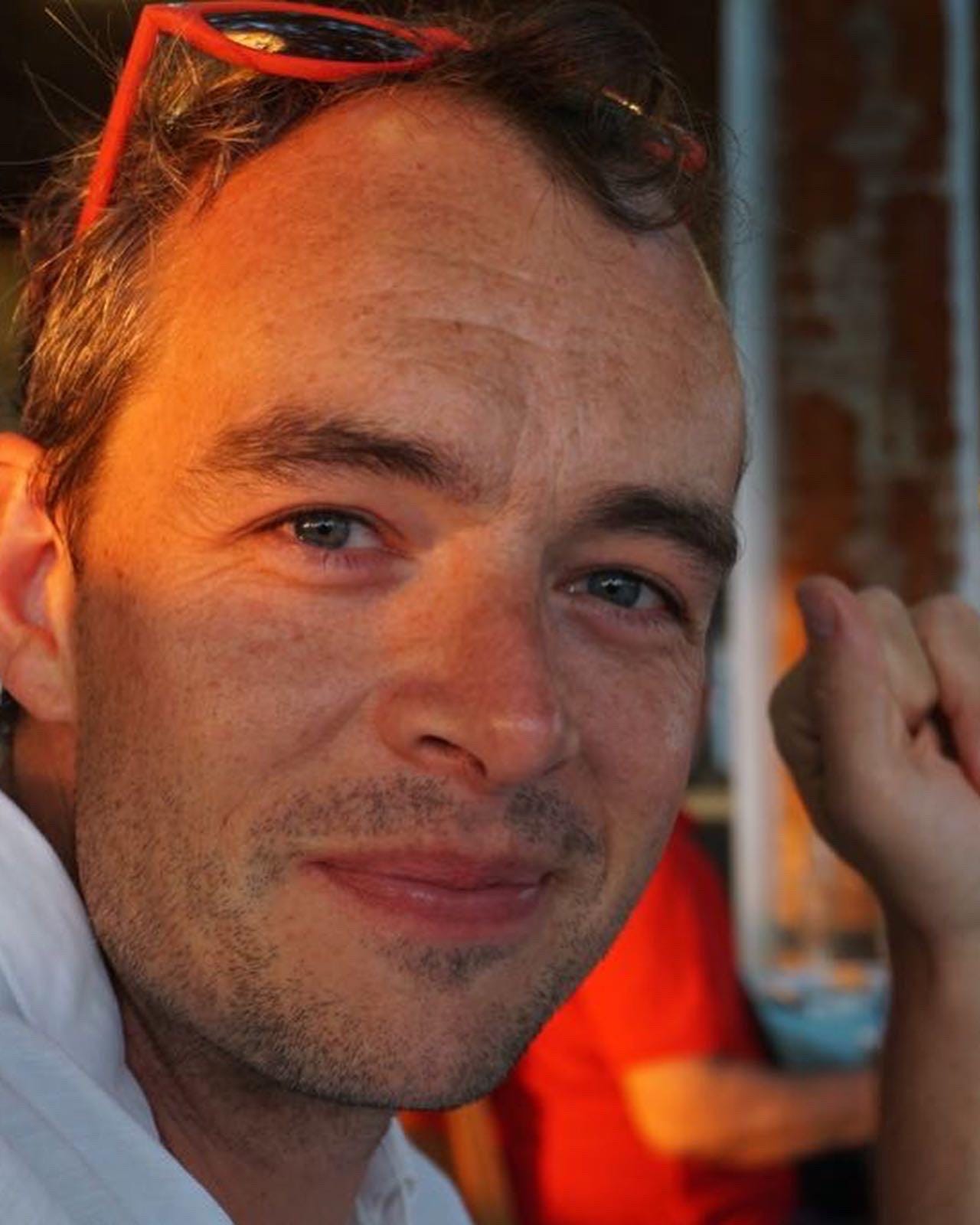Our dear friend and colleague Marcus Willcocks was perhaps the world’s most fervent champion of public space. He dedicated his career to making city streets safer and more equitable — through joy, self-expression, and community creativity.
If Marcus were Mayor, your streets would be full of soul, colour, and life. They’d offer you places to hang out, meet others, and build trust on your doorstep. Most importantly, they’d feel like our streets — spaces we could fall in love with, where we could express our identities and truly belong. Or as we liked to call them: spaces to speak back.
I first got to know Marcus through my college professor at Central Saint Martins, Maziar Raein, when I was planning to move to Barcelona to study. “I’ve met someone on the Master’s you’re applying for,” he said. “You should have a chat with him.” After a couple of phone calls, we’d not only found a shared passion for public space — I’d also found a new flatmate.
So began a twenty-year friendship and creative partnership, of the most generative kind. Marcus dove into everything with enthusiasm and was seemingly scared of nothing. For 25 years he worked as a Research Fellow with the Design Against Crime research team at Central Saint Martins, and took us to the tougher corners of the city that others overlooked. He signed up for a Masters course taught in Spanish before he could speak it — confident he’d figure it out. He came from an industrial design background, and was a master-maker: always tinkering, building, fixing. He could knock up a new object, prototype an idea, or mend almost anything with uncanny flair. We often talked about experimentation as a mode of celebration and his talent for testing and iterating made him a brilliant research partner. With a small amount of funding, together we launched Urban Lexicons in 2006 as a research project between friends. Over the next 18 years, we developed and evolved it through many cities and collaborations around the world.
Marcus adored Barcelona and the Catalan way of life. He was drawn to the city’s sociability and streetlife, its expressive identity, and the care and design embedded in its public realm. It was also where he met Marta — his extraordinary wife, whose energy and smile he fell head over heels for. Their beautiful marriage became a beautiful family, with two wonderful boys, Joel and Ruben. We had many great times with them, returning to Barcelona for projects, friends, and fresh inspiration. There was always a reason to go back.
Marcus’s courage was balanced by immense kindness and deep care for others. From the first moment you met him, you felt it — which is why he drew so many lifelong collaborators and friends. He was always on the move, most alive on two wheels. He found kinship with the sports anthropologists who taught us in Barcelona, especially Gaspar Maza and Xavi Camino, and their connection lasted for decades.
He believed in action over theory. He wanted ideas to become real — and he made sure they did. Through his work as a Senior Urban Designer with Sustrans, as an expert with the Design Council, and through countless projects across the UK and abroad, he helped shape public space with and for communities.
Marcus designed with the public — not for them. He was a firm believer in asking: “Whose voice is included? And who is missing?” He opened doors for people who were rarely invited in, and gave them the confidence to shape spaces that felt representational and reciprocal — places you could love, and that could love you back. And he did it playfully. Whether it was commissioning street art with communities through My Mural at Central Saint Martins; creating Storytrails in Regent’s Park Estate with his friend and colleague Professor Adam Thorpe; or building connections through the Bristol-to-Bath cycle path — Marcus made design joyful, inclusive, and profound.
Our Urban Lexicons journey took us far beyond Barcelona — to Bristol, Bilbao, Toronto, Austin, Adelaide, Sydney, and countless city streets. Through action research, we explored how the city speaks to us and how we can speak back as active citizens. We gave talks, published essays and chapters, and shared thinking across sectors and disciplines. But most importantly, we took that work to the streets. We ran workshops around the world, sharing skills and tools with designers, researchers and communities — and had a ball along the way. We challenged and inspired each other, with very different voices and perspectives. Marcus believed in agonism — the concept that disagreement can be creative — and this divergence was one of the most fruitful aspects of our work.

The sheer range of Marcus’s projects spoke to his fizzy energy and boundless curiosity. He wore many hats in a life cut far too short. Alongside his roles with Central Saint Martins, Sustrans, and the Design Council, he collaborated with us many times at The Place Bureau on projects that will shape the future of entire cities. He had a big impact on Bristol — the city he called home. Together we designed new modes of creative co-design and engagement for Bristol’s Western Harbour. We worked with residents, teams at Play Disrupt and Turner Works, and creative ambassadors from across the city — from city poet to portrait photographers — to reveal new sides of the spaces people loved. He was instrumental in creating the Vision for Place for Bristol's Temple Quarter that will welcome millions of people to the city, working alongside hundreds of community representatives and students at local film school Screenology. And that boundless energy went back to his beloved Barcelona, travelling with us to Catalunya to help set up a new co-design programme in Sant Joan Despí. Marcus did so much — and always with such heart.
Marcus passed away this month after a long battle with leukaemia. We write this to celebrate his energy, his joy, his fearless spirit. Because he was an explorer — of places, ideas, and people — I don’t think he’d be afraid of what comes next. He was always buoyed by those he worked with, and I’m sure he’s got to work making friends and reimagining public spaces on the other side.
Marcus was one of a kind. An epic friend whose energy I miss every day. To me, he was the UK’s foremost expert on equitable public space — not just in knowledge, but in ethos. He showed what real expertise looks like: deep empathy, fierce listening, and a passion for elevating voices too often ignored. He stood up again and again for the public’s right to belong in the places we share.
If you believe cities should be for all of us — should reflect our stories, invite joy, and help us all feel at home, then take the inspiration from Marcus forward. Read what he wrote. Try out his workshops and tools. Share your space, share your voice. And face the speculators, the cynics, and the bland public spaces with creativity, courage, and colour.
Because Marcus taught us something simple but profound:
Life’s too short for cities to be boring.
Make your streets amazing again.
—
To hear more about Marcus and his work, check out three of our favourite videos below. Find out more about Urban Lexicons or his research with Central Saint Martins.








